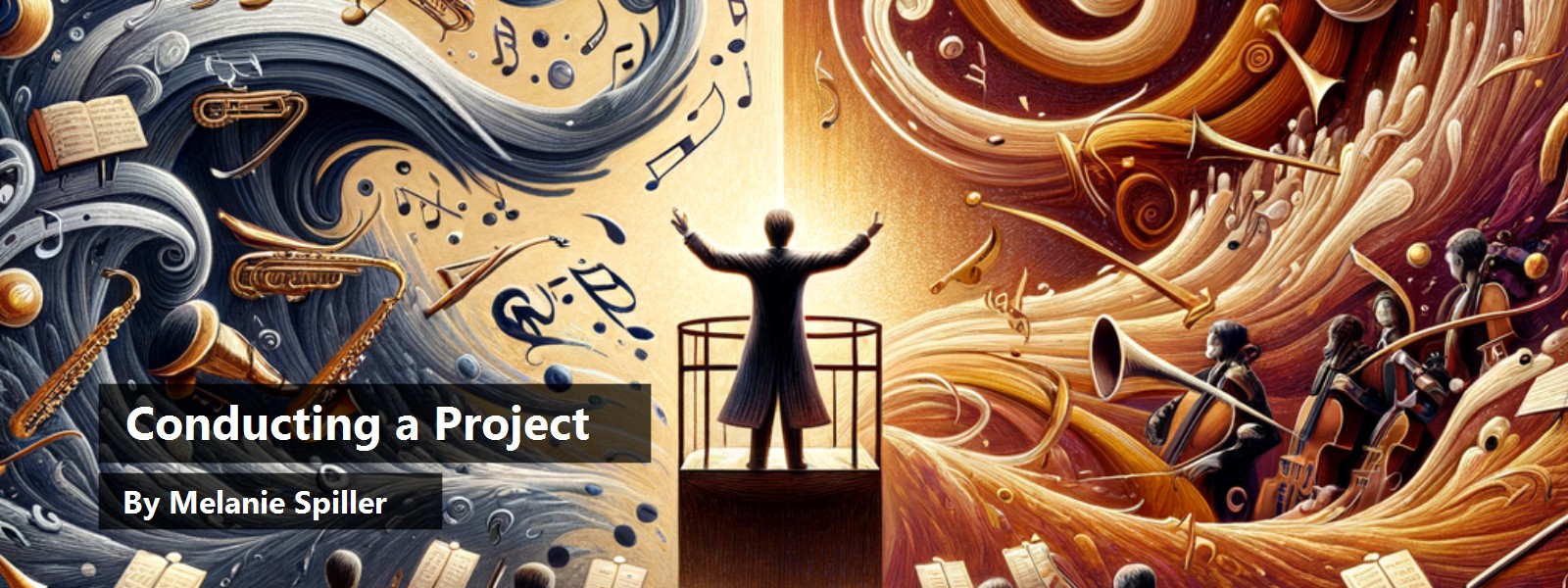Consider the chaos of an orchestra before the concert starts. There are a bunch of people, each wielding a different instrument with a certain level of skill. Each sits before a music stand holding the music designed only for their specific instrument. Each warms up or practices; no two people play together. The flute player tootles away, the violinists saw at their instruments, and the drummers are either playing their music or tuning. The room is cacophonous. Individual sounds might spike out and be pleasant, the French horns or the bassoon perhaps, but on the whole, no one would call this music. The elements of music are present, but it isn't what we normally define as music.
Enter the conductor. This is the only musician in the room with sheet music displaying all of the parts. The conductor is also rather likely to be the only one in the room who's examined the music a gazillion times looking for repeated phrases, moments that should be quiet or fast or loud or slow, sections where one instrument or another is exhibited, and general emotional content. The conductor is the only person whose musical vision for the piece is relevant—everyone else might have an opinion (and a good conductor wants to hear them), but the performers are the instrument that the conductor plays. They've spent their time in rehearsal understanding and implementing the conductor's vision, all culminating in the delivery of the piece at the concert.
The presence of a conductor in music is relatively new. You see, for millennia, music was largely produced in unison. Music like Gregorian chant (which is a descendant of Hebrew chant) was also how secular music sounded, although there were elements of rhythm in secular music. It wasn't until there began to be multiple melodic lines—which didn't happen until after notation was invented in the 10th century—that the difficulty in staying together cropped up. Music went from everyone producing the same notes at the same time to people wandering off and creating their own harmonies and complementary melodies—and even complementary or contrasting rhythms. That's when the need for a conductor appeared in both sacred and secular music.
This didn't happen until about the 13th century and wasn't really a separate job from a leader within the musicians until the beginning of the 19th century. You can still see the traditional nod to the first-chair violinist—called the concert master—from the conductor before and after every performance. Back in the 13th century, the leader was also playing an instrument or singing and merely provided a beat—called a tactus (which means “pulse”). By the 19th century, there were larger numbers of musicians playing a large variety of instruments involved in producing music in large halls with longer echoes, and it became necessary for someone to give up their instrument and stand at the head of the orchestra or choir not only to keep everyone together but to lead the interpretation of the music.
But it IS the role of the PM to see what all the players are up to at any given point, know what their skills are and what they need, and what might be an obstacle to a great performance and timely delivery.
Project management isn't exactly the same. There's no point where the PM raises his baton, all players take in a breath and watch intently for the baton's down-stroke, and then, with a gesture, the whole symphony begins and there's a unifying sound that moves the performers and the listeners forward in the same direction, as defined and led by the conductor. But it IS the role of the PM to see what all the players are up to at any given point, know what their skills are and what they need, and what might be an obstacle to a great performance and timely delivery.
Just as the conductor takes the piece of music apart at rehearsal, refining here and experimenting there, the PM needs to know who's doing what and when, and how the orchestration of it will change if any of the players run into a hitch. Like the conductor, the PM doesn't need to know how to play all the instruments or do all the tasks, but he or she needs to know the capabilities and range of the participants and their tools.
So now the whole orchestral team is playing along nicely, headed toward the goal of the great crashing thunder of grand finale. There may be mistakes along the way or other technical problems—it's the responsibility of each professional to know how to get out of a pickle, to listen and find the right place to play even if they can't see the whole project/score. Each has to know the piece and their part in it well enough to “hear ahead” and come in, on time and in tune, even though they don't have access to anyone else's part.
By now, the analogy to project management should be pretty clear. Just as the conductor has to know and understand what everyone is doing and be consistent and clear with instructions, so does the project manager. The key is communication: The conductor communicates using a baton and hand gestures, which work exactly like concise and useful emails, and well-constructed, informative, and efficient meetings. The conductor and the project manager—and the members of the orchestra and team—have to listen and communicate. That's how the project comes to a happy final note when it goes live.






